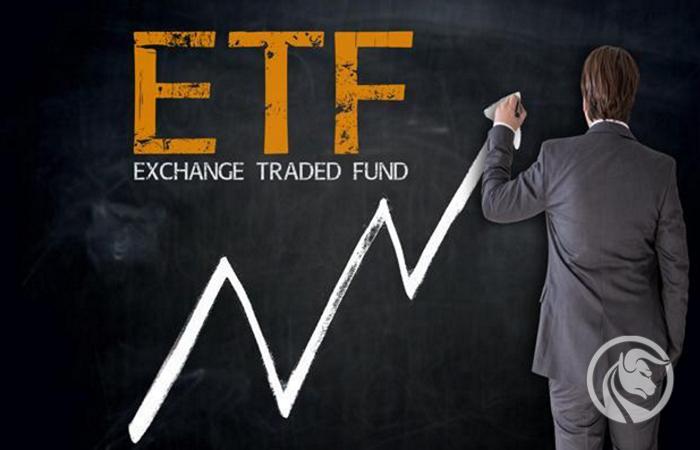ETF as an alternative to stocks and indexes
ETF, or Exchange-traded funds, are one of the most popular and at the same time the most innovative securities. These instruments were created in order to imitate price changes, eg raw materials, stock market indices or a whole basket of selected company shares (eg from a given sector). In other words, they are investment funds listed on the stock exchange, in a manner similar to the classic shares of companies.
Trading on ETFs is identical. However, it is a form of alternative for people who would like to invest in a given sector or type of instruments. At the same time, without having to master a wide range of knowledge and technical aspects related to trading on them.
The advantages of investing in ETF
They are independent instruments, which means that their prices change in real time due to the balance of supply and demand forces. You can also buy or sell them in an extremely easy way, as everything is done in the same way as stock trading. Additionally, ETF holders are entitled to receive additional profit in the form of dividend payments in the case of listed companies, and in the event of their liquidation, they may receive part of the capital.
READ ALSO: What are ETFs? Introduction to investing in ETFs
Their big advantage is simple construction and low transaction costs. Thanks to them, we gain access to a wide range of indices and instruments, including those that reflect entire sectors, and even bonds. At ETFs, we can also use well-known stop and limit orders and make short sales (it happens occasionally that selected stock exchanges do not accept short-term sales).
It is also an interesting way to diversify the risk as it reflects the situation on the broad market and may reflect its general sentiment (e.g. in the biotechnology sector). And it is precisely this stratification that means that when investing in ETFs of a given type, we do not invest funds in one company, but immediately in the most important representatives of the entire sector in the right proportions.
You can also often come across contracts for difference (CFDs) on ETFs, which are additionally subject to the leverage mechanism, even up to 1:10. The margin required to open a position depends on the capitalization, liquidity and volatility of the instrument.
How and where to trade?
Relatively few Forex brokers offers trading on ETF instruments, and if it does, CFDs will dominate. When choosing an offer for trading on ETFs, it is worth paying special attention to the trading conditions in the form of fees (percentage and minimum), swap points, trading hours, as well as the minimum transaction value.
Example brokers:
- XTB,
- London Capital Group,
- Lynx Broker,
- Delta Stock.






















![Forex Club – Tax 9 – Settle tax on a foreign broker [Download the Application] Forex Club - Tax 9](https://forexclub.pl/wp-content/uploads/2024/02/Forex-Club-Podatek-9-184x120.jpg?v=1709046278)
![Trading View platform – solutions tailored to the needs of traders [Review] trading view review](https://forexclub.pl/wp-content/uploads/2024/03/trading-view-recenzja-184x120.jpg?v=1709558918)
![How to connect your FP Markets account to the Trading View platform [Guide] fp markets trading view](https://forexclub.pl/wp-content/uploads/2024/02/fp-markets-trading-view-184x120.jpg?v=1708677291)
![How to invest in ChatGPT and AI? Stocks and ETFs [Guide] how to invest in chatgpt and artificial intelligence](https://forexclub.pl/wp-content/uploads/2023/02/jak-inwestowac-w-chatgpt-i-sztuczna-inteligencje-184x120.jpg?v=1676364263)





![Izabela Górecka – “Success on the market depends not only on knowledge, but also on emotional stability” [Interview] Izabela Górecka - interview](https://forexclub.pl/wp-content/uploads/2024/04/Izabela-Gorecka-wywiad-184x120.jpg?v=1713870578)
![WeWork – the anatomy of the collapse of a company valued at $47 billion [WeWork, part II] wework bankruptcy story](https://forexclub.pl/wp-content/uploads/2024/04/wework-bankructwo-historia-184x120.jpg?v=1711729561)
![Adam Neumann – the man who screwed up Softbank [WeWork, part AND] adam neumann wework](https://forexclub.pl/wp-content/uploads/2024/04/adam-neumann-wework-184x120.jpg?v=1711728724)



![The most common mistakes of a beginner trader - Mr Yogi [VIDEO] Scalping - The most common mistakes of a beginner trader - VIDEO](https://forexclub.pl/wp-content/uploads/2024/03/Scalping-Najczestsze-bledy-poczatkujacego-tradera-VIDEO-184x120.jpg?v=1711601376)
![Learning patience: No position is also a position - Mr Yogi [VIDEO] Scalping - Learning patience - No position is also a position - VIDEO](https://forexclub.pl/wp-content/uploads/2024/03/Scalping-Nauka-cierpliwosci-Brak-pozycji-to-tez-pozycja-VIDEO-184x120.jpg?v=1710999249)
![When to exit a position and how to minimize losses - Mr Yogi [VIDEO] Scalping - When to exit a position and how to minimize losses - VIDEO](https://forexclub.pl/wp-content/uploads/2024/03/Scalping-Kiedy-wyjsc-z-pozycji-i-jak-minimalizowac-straty-VIDEO-184x120.jpg?v=1710336731)






![How to invest in ChatGPT and AI? Stocks and ETFs [Guide] how to invest in chatgpt and artificial intelligence](https://forexclub.pl/wp-content/uploads/2023/02/jak-inwestowac-w-chatgpt-i-sztuczna-inteligencje-300x200.jpg?v=1676364263)












Leave a Response